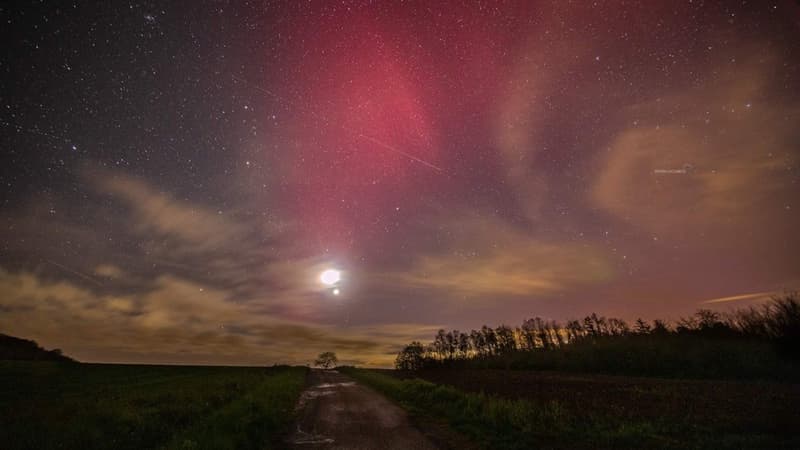But what happens in the stars? On Sunday night, for the second time this year, the northern lights were observed in the French sky. In Toulouse, in the Alps, in Lorraine or even in the Hauts-de-France, the French were able to marvel at the spectacle offered, where the night sky was adorned with colored spots.
Already observed on the night of February 27-28, the northern lights, or australis when they take place in the southern hemisphere, have been on the rise in the French sky, and more generally at abnormally low latitudes since the beginning of the year. . While they are normally confined to the poles of our planet, that is to the territories around the Arctic and Antarctic.
The solar storms in question
Auroras are caused by activity on the surface of the Sun and the storms that buffet it, specifically coronal mass ejections. The latter send clouds of electrically charged particles into space, the Greenwich Observatory reports.
A minority of them are picked up in the Earth’s magnetic field, and are normally concentrated at its magnetic poles. Meeting with the atoms and molecules of our atmosphere, solar particles “excite” them, which leads to the creation of the aurora borealis.
For colors, they must be linked to gases. Oxygen turns green or red, and nitrogen blue and purple. The wavy patterns and “curtains” of light in the aurora are caused by the strength of Earth’s magnetic field.
Northern lights from the window
But when the solar storms are especially strong, or the activity on the star’s surface increases, the northern lights are too, and they venture to latitudes that are usually foreign to them.
In addition to the auroras recently observed in France, the phenomenon has also been reported in recent weeks in the southeast of England but also in Australia, CNN reports, as well as in Alabama and North Carolina in the United States.
At the end of February, a pilot on an EasyJet plane connecting Reykjavik, Iceland, with Manchester, UK, even slightly deviated from his flight plan to allow all his passengers to see the northern lights taking place on the other side of the ox eyes. .
A plasma traveling at 3.2 million km/h
Closely studied, solar activity points in this direction. The US Space Weather Prediction Center noted a powerful geomagnetic storm, caused by a solar flare, on April 21. It is the latter that is the origin of the northern lights observed in France on the night from Sunday to Monday.
The plasma passed through our solar system at about 3.2 million km/h, to impact Earth on April 23. This storm was rated G4, on a scale of five. It is one of the largest geomagnetic storms on record in six years.
By early March, two large coronal mass ejections had already been observed. According to the UK Met Agency, the increase in geomagnetic activity is caused by a “large and magnetically complex” area of the Sun, called AR3234.
The Sun and its 11-year cycle
This increase in solar activity is not a coincidence. As astrophysicist Éric Lagedec pointed out in February on Twitter, the Sun follows an 11-year cycle, during which the level of activity of its eruptions fluctuates. Its 25th cycle, the current one, began in December 2019 with a solar minimum, a period in which the star is active but calmer.
However, we are currently approaching a period of solar maximum, which will peak in July 2025, a month that will be marked by increased solar activity. The northern lights currently being observed at abnormally low latitudes are therefore just the beginning of what could happen in a little over two years.
“Energetic events such as solar flares and coronal mass ejections have become more frequent over the past year, and particularly over the past month, and we expect activity to continue to peak,” said Rob Steenburgh, a scientist. space, in a statement broadcast on CNN.
Aurora Borealis in the Caribbean in 1859
As the CNRS website details, it is not the first time that our sky has been turned upside down by solar activity. The most significant event dates back to 1859. A solar flare called the “Carrington event”, the largest ever observed, severely disrupted electrical telegraph telecommunications.
But the most impressive thing is that auroras had been observed in the tropics, especially in the Caribbean. In 1986, another solar storm caused a six-hour power outage in Quebec. Because these eruptions can also have consequences on our telecommunication media and our satellites.
In 2003, Sweden was plunged into darkness for an hour. And who predicts what awaits us in July 2025?
Source: BFM TV


